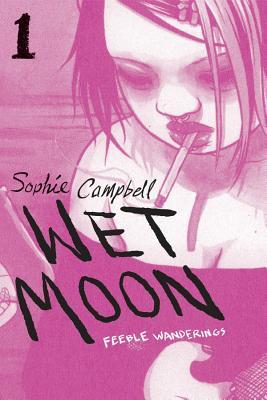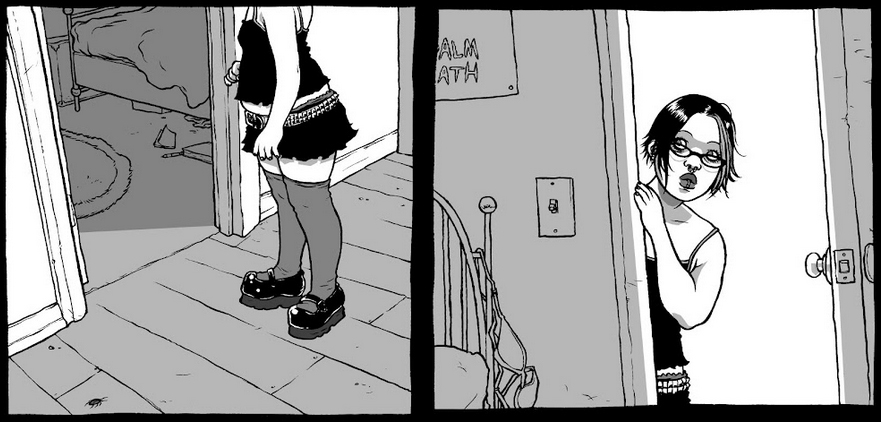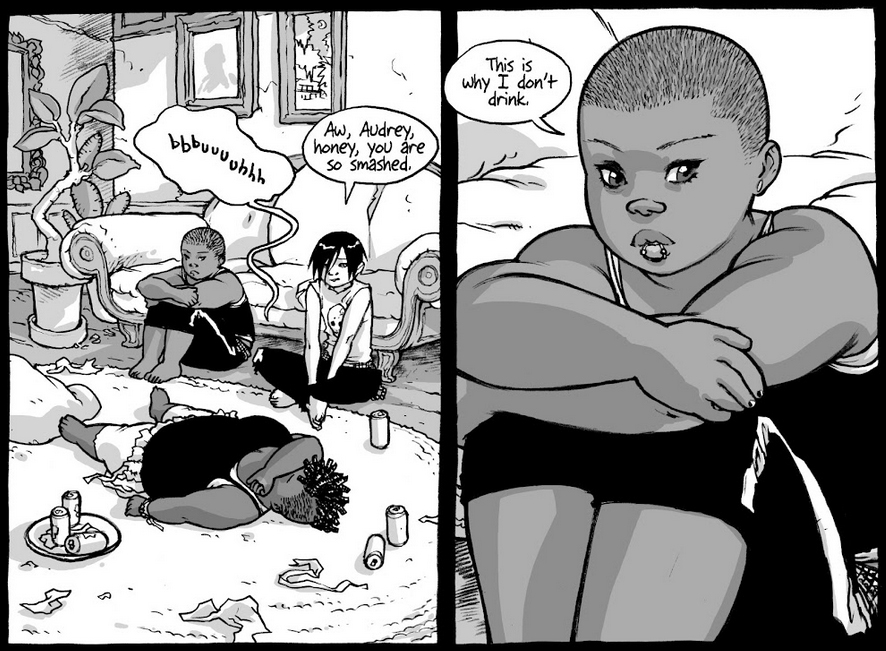

This series of seven graphic novels follows Cleo and her circle of goth friends as they start college in their swampy, atmospheric hometown in the south of the US. Beyond that Wet Moon isn’t really “about” anything, as its author says in the afterword, except a way for her to follow her whims and explore her weird, silly ideas without external pressure. And so it reads, and that’s definitely a part of its charm.
In the first few issues in particular the reader is mainly just following Cleo and her friends through their social and romantic intrigues as they attempt to navigate adulthood for the first time. Wet Moon is an ode to teenage friendships, to goth girls, cats and supernatural mysteries.
The girls chat on the phone, share secrets, attend concerts and comic conventions, make zines, and write diaries, LiveJournal entries and secret fanfiction. They hang out in video stores and coffee shops; they bicker, cheat, lie and try to deal with trauma and queerness and body image issues. They are deeply flawed and authentically human.
Year of publication:
2004-2018
Country of publication:
USA
Page count:
Most of the 7 volumes have less than 200 pages
Would I recommend this book?
Yes
Cleo is bisexual - we see her fall in love with a girl for the first time and navigate her coming out. Several other characters are also bi, gay or ambiguously queer, adding up to a majority queer cast.
The comic touches on both straight and gay biphobia without feeling like a public service announcement - when faced with bigotry, the characters end up angry and flustered, unable to properly defend themselves. They’re only capable of being articulate and self righteous later, in their diaries and LiveJournals.
I first read Wet Moon when I was about the characters’ age and it felt like a revelation - I had never seen women’s bodies depicted in a way that seemed so real to me. Even in today’s era of body positivity, drawings of bodies often feel weirdly idealised and sanitised, in line with fashion brands expecting plus size models to have skinny faces and flat tummies while giving them hip pads to achieve an hourglass figure.
The Wet Moon girls have bellies, they slouch, they sit in unflattering ways and wear stupid teenage fashion. Unlike typical comic book characters, they don’t have uniforms but wear whole wardrobes and experiment with their hair.


Unfortunately, it is because the comics are so grounded and embodied that it feels like such a betrayal when the art style changes significantly about a third of the way into the series. Facial features suddenly become cartoonish and exaggerated in an unnerving way that distracts from the story.
Thankfully the story takes a more serious turn in the later books, forcing the art to return to a more realistic style to match the tone.
The last volume, which came out six years after its predecessor, tries to wrap up the story and manages to offer an emotionally, if not narratively satisfying conclusion. Most of the supernatural plot threads end up unresolved but that almost seems more fitting to what Wet Moon is than the hasty attempts to redeem and couple up the characters.
Still, the series, which started with Cleo moving into her student dorm, concludes with several characters moving out of the dorms, offering a gratifying bookend to their college journey, leaving them changed from when we first met them, and leaving this unique work complete.
